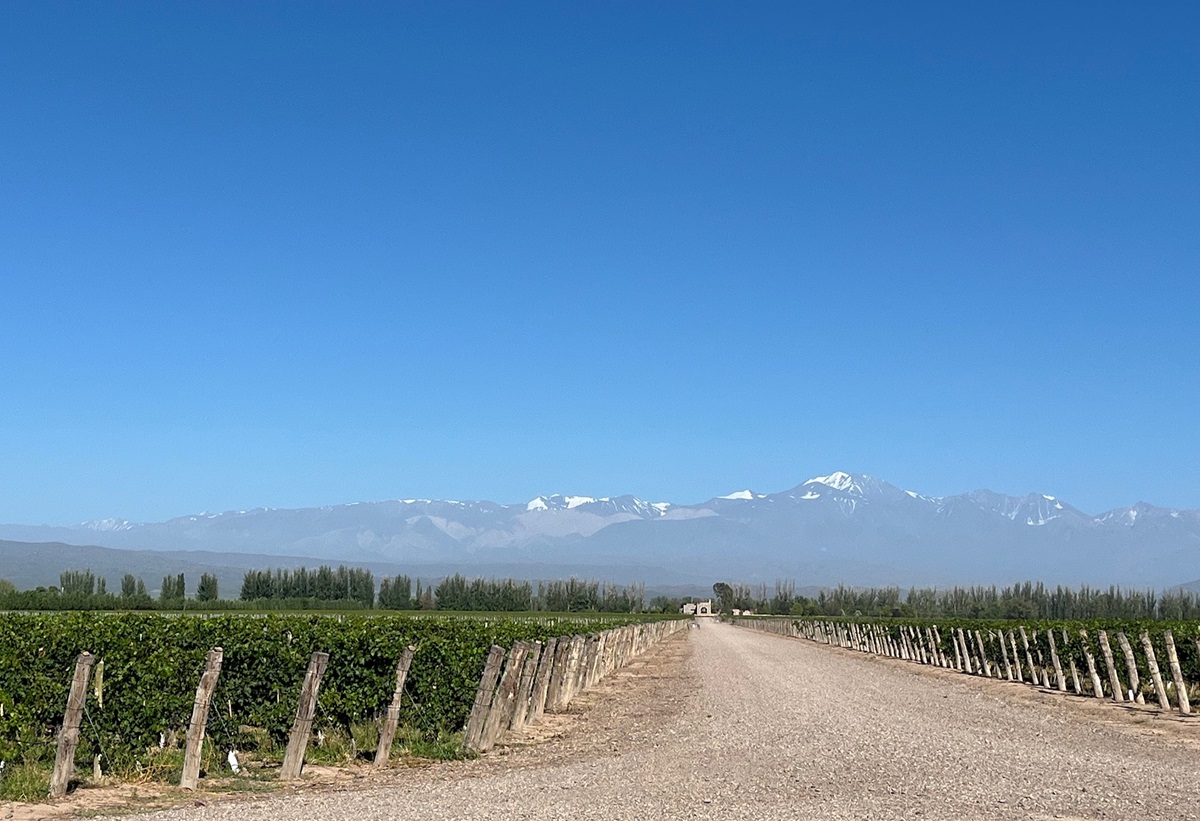TOPAQUE
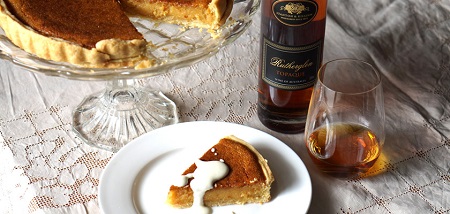
By Rose Murray Brown MW Published in The Scotsman 11 November 2017
As the nights draw in, it is time for good ‘sipping’ wines. One of my favourite fireside-sippers is the sweet dark sticky fortified liqueur wine from Australia. Rutherglen Muscat is the best known of them, but less well known and equally good is its little-known cousin, ‘Topaque’.
Topaque is a new name for a very old wine, with a 120 year history down-under. It has been made in the far northeast corner of Victoria near the Murray River since the gold mining heydays of the 1850’s, where it was known until recently as Liqueur Tokay.
Topaque is made from the Muscadelle grape, which is not part of the Muscat family. It is a minor French grape popular in Monbazillac in the Dordogne, with a little planted in Sauternes, Barsac, Cadillac and Loupiac in Bordeaux for dessert wine blends.
Down-under in Australia Muscadelle thrives in the baking heat of Rutherglen vineyards. It was originally called Tokay because early settlers thought the grape was Hungarian or bore similarities to Hungary’s Tokay wine (made from Furmint and Harslevelu). But in 1976 a visiting French ampelographer Paul Truel identified that what the Aussies thought was Tokay or Furmint was infact the French Muscadelle grape.
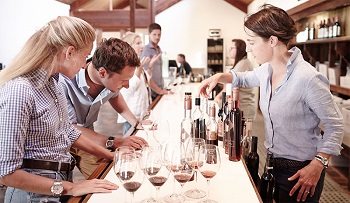 As the name Tokay was being outlawed as the Hungarians did not want the Australians using it and the EU objected to the word liqueur, Rutherglens handful of producers had to devise another name – Topaque. This name is now mandatory on Liqueur Tokay labels made since last year, 2016 – but despite efforts, the Topaque name has not really caught on yet. Perhaps that is because it doesn’t sound like a wine at all – more like a new toffee bar or perfume.
As the name Tokay was being outlawed as the Hungarians did not want the Australians using it and the EU objected to the word liqueur, Rutherglens handful of producers had to devise another name – Topaque. This name is now mandatory on Liqueur Tokay labels made since last year, 2016 – but despite efforts, the Topaque name has not really caught on yet. Perhaps that is because it doesn’t sound like a wine at all – more like a new toffee bar or perfume.
In the vineyard, Muscadelle can cause problems for growers as its propensity to sweetness is very attractive to wasps and moths – more than Muscat. It is also very susceptible to botrytis, hence its popularity in the botrytis-affected wine areas like Monbazillac and Sauternes in France.
Topaque wine is made in the same way as the Muscat. Grapes are semi-raisined on the vine, partly fermented and fortified early with grape spirit (in the same way as Port is) retaining natural sweetness. The newly fortified sweet wine is then subjected to an unique oxidative carmelising process that bears resemblance to Madeira’s canteiro heat treatments and the Sherry solera.
Rutherglen’s Topaque & Muscat are then oak aged in casks and left to mature in furnace-like temperatures under corrugated iron roofs. They are bottled when ready to drink and don’t benefit from maturation in bottle. Once opened they should be drunk with a few months of opening to enjoy their freshness.
The result is a dark sweet high liquid (with about 17.5% alcohol) which tastes malty, treacley and often of cold tea. Tastewise Liqueur Topaque has more citric candied fruit character than the grapey-flavoured Liqueur Muscat. Both are dark hedonistically sweet wines, but Topaque often has a distinct green streak to its colour and more carmelised notes.
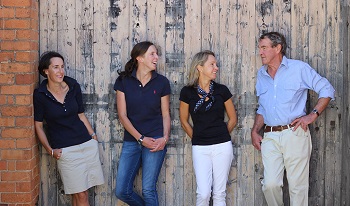 There is just a small band of eight producers focusing on these national treasures. Several are still family-owned with a new younger generation now coming to the fore focusing on reviving these national treasures. Best known are Campbells (pictured right), Stanton and Killeen, Chambers and Morris, but Seppeltsfield, McWilliams, Pfeiffer and Baileys of Glenrowan are also worth seeking out. Their self-imposed quality system has four quality levels: Rutherglen (aged 4 years), Classic (10 years) with Grand (15 years) and Rare (20 years+) reserved for special old solera bottlings.
There is just a small band of eight producers focusing on these national treasures. Several are still family-owned with a new younger generation now coming to the fore focusing on reviving these national treasures. Best known are Campbells (pictured right), Stanton and Killeen, Chambers and Morris, but Seppeltsfield, McWilliams, Pfeiffer and Baileys of Glenrowan are also worth seeking out. Their self-imposed quality system has four quality levels: Rutherglen (aged 4 years), Classic (10 years) with Grand (15 years) and Rare (20 years+) reserved for special old solera bottlings.
Opinions are divided as to what to match with these delectable sweet stickies. Stanton & Killeen suggest pears poached in Topaque and toffee and nut icecream, chocolate torte or treacle tart (pictured above). Other suggestions are as disparate as fresh juicy pineapple, dark chocolate, Cheddar cheese – and even Stornoway black pudding. My personal preference with Liqueur Topaque is a good blue cheese like Lanark Blue or Galloway’s Fleet Valley Blue.
TOPAQUE TASTE TEST
Stanton & Killeen Rutherglen Topaque NV (17.5% alc)
(£15.25 hf bt Alexander Wines, Glasgow www.alexander-wines.co.uk; Hannibal Brown Wines www.hannibalbrown.com; The Vine King)
Lightest of the Topaques with distinct citric and malt notes and a cold tea flavour with delicate hints of honey.
Stanton & Killeen Rutherglen Classic Topaque NV (17.5% alc) ***STAR BUY***
(£17.99 hf bt Alexander Wines, Glasgow www.alexander-wines.co.uk; Hannibal Brown Wines www.hannibalbrown.com; The Vine King)
More depth and complexity with a silky richness here and lovely fruity tones and malty treacley undertones; initially raisiny and sweet, but finishes fresh.
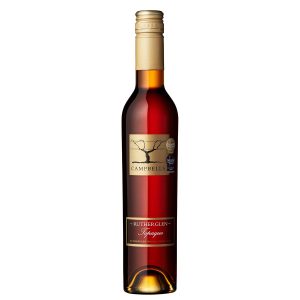 Campbells Rutherglen Topaque NV (17.5% alc)
Campbells Rutherglen Topaque NV (17.5% alc)
(£14.50 hf bt Alexander Wines, Glasgow www.alexander-wines.co.uk; Hannibal Brown Wines www.hannibalbrown.com; Wine Mill www.winemill.co.uk)
Hints of raisins with a savoury edge; a touch lighter than Campbell’s Liqueur Muscat with more citric fruit character giving it freshness.
Campbells Rutherglen Classic Topaque NV (17.5% alc) ***STAR BUY***
(£22.65 hf bt Alexander Wines, Glasgow www.alexander-wines.co.uk)
Most elegant of the Topaques we tasted distinct caramel and tea leaf flavour, hints of Christmas cake with its raisiny, figgy, candied fruit notes, finishes long and fresh.
Join Rose’s Chocolate & Wine Tasting on 12 December at The Scotch Malt Whisky Society in Edinburgh £42 www.rosemurraybrown.com
wine tastings
The perfect gift for the wine enthusiast in the family. Rose does In-person tastings too.
cellar advice
Rose does cellar valuations for private clients, valuations for insurers & bespoke portfolio management.
Related stories
March 31, 2024
By Rose Murray Brown MW Published in The Scotsman 30 March 2024 On 2 February 1659, the first wine made from grapes grown in South Africa was crafted by the Governor of the Cape, Jan van Riebeeck. He had planted vines four years earlier in the Company’s Garden near Cape Town from cuttings imported from France. Van Riebeeck’s first
March 24, 2024
By Rose Murray Brown MW Published in The Scotsman 16 March 2024 Heatwaves and bushfires were very much on the agenda when I visited Chile last month as winemakers prepared for their 2024 harvest in blistering heat and drought, with a plume of smoke from the devastating fires lingering over coastal hills. Heat and drought are the greatest challenges
March 23, 2024
By Rose Murray Brown MW Published in The Scotsman 9 March 2024 I have two glasses of Malbec in my hands from the same high-altitude vineyard in Uco valley in Argentina. I am in the Catena Institute of Wine in Mendoza with winemaker Agustin Silva. He has asked me to taste the two wines, both from the 1500m high



